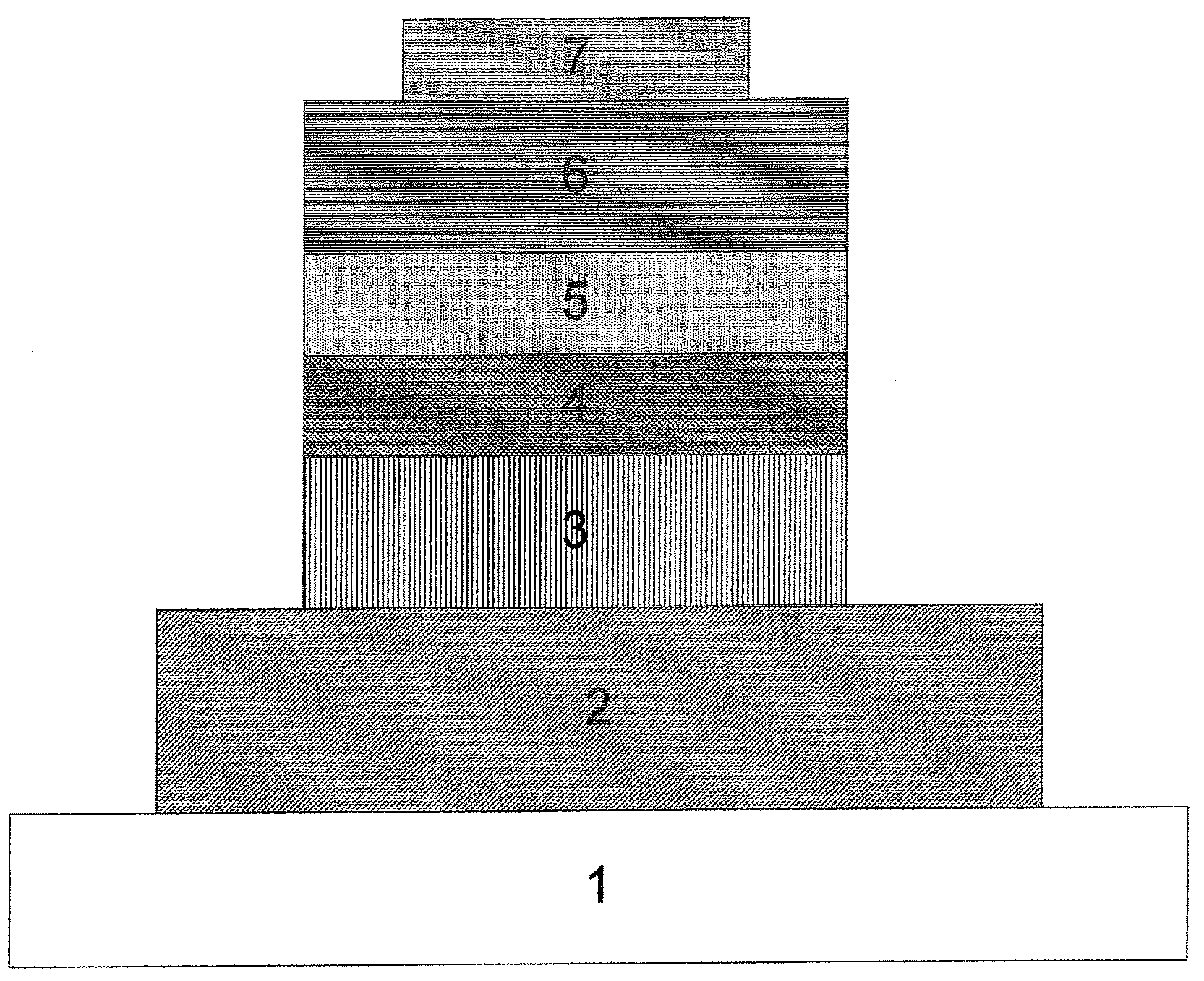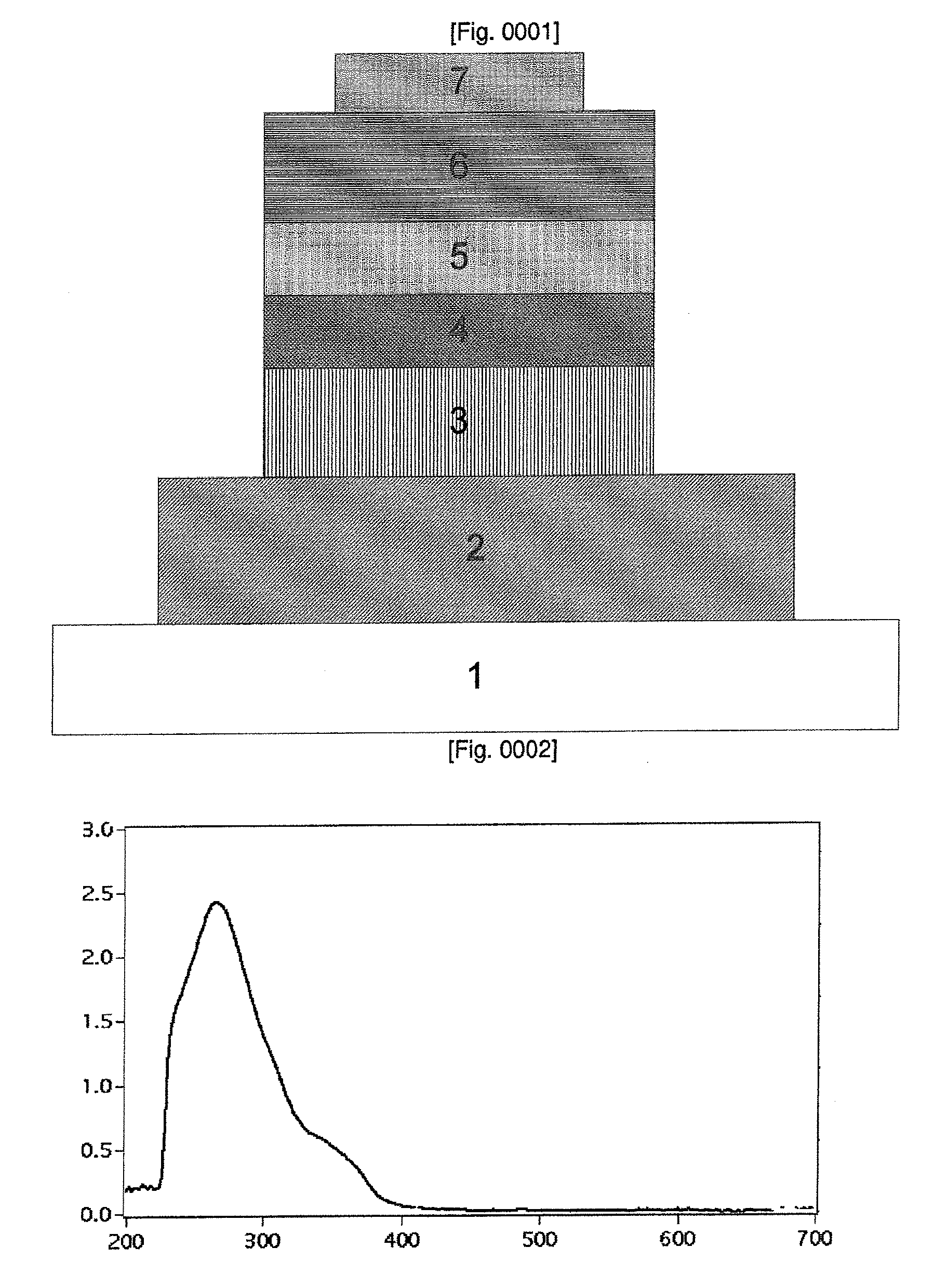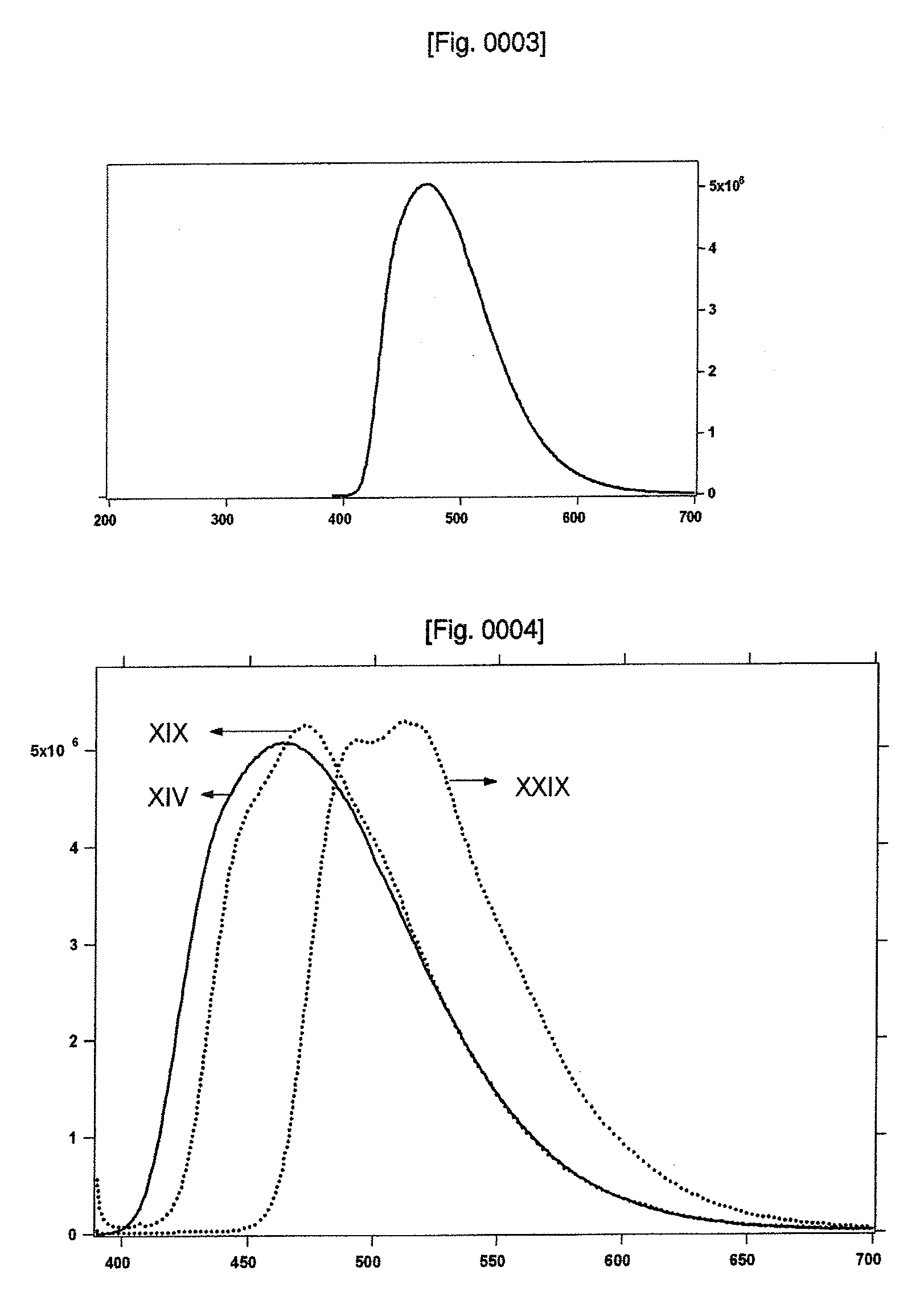Light-emitting material
a technology of light-emitting materials and materials, applied in the field of light-emitting materials, can solve the problems of slow and inefficient luminescence, waste of energy in the triplet state, and low efficiency of el, and achieve the effect of improving chemical and thermal stability, without any risk of decomposition nor degradation
- Summary
- Abstract
- Description
- Claims
- Application Information
AI Technical Summary
Benefits of technology
Problems solved by technology
Method used
Image
Examples
Embodiment Construction
[0069]UV-VIS Measurements: UV-VIS spectra were recorded in a 1 cm path length quartz cell on a Cary 5 spectrophotometer. Emission spectra were recorded on a Spex Fluorolog 112 using a 90° optical geometry. The emitted light was detected with a Hamamatsu R2658 photomultiplier operated in single photon counting mode. The emission spectra were photometrically corrected using a NBS calibrated 200 W tungsten lamp as reference source. The absorption and the emission spectra were obtained by dissolving the solids in dichloromethane solvent and the concentrations were in the range of 5×10−6 to 1×10−5 M. All the emission spectra were obtained by exciting at 380 nm and the typical concentrations were 1×105 M.
Synthesis of 2-iodo-4-dimethylaminopyridine
[0070]BF3.Et2O (8.4 g 59 mmol) was added dropwise to a solution of 4-dimethylaminopyridine (6 g 49 mmol) in dry THF (250 ml) at 0° C. The resulting mixture was stirred 1 hour at 0° C. under nitrogen. Temperature was cooled down to −78° C. and BuL...
PUM
| Property | Measurement | Unit |
|---|---|---|
| atomic number | aaaaa | aaaaa |
| metallic | aaaaa | aaaaa |
| electric energy | aaaaa | aaaaa |
Abstract
Description
Claims
Application Information
 Login to View More
Login to View More - R&D
- Intellectual Property
- Life Sciences
- Materials
- Tech Scout
- Unparalleled Data Quality
- Higher Quality Content
- 60% Fewer Hallucinations
Browse by: Latest US Patents, China's latest patents, Technical Efficacy Thesaurus, Application Domain, Technology Topic, Popular Technical Reports.
© 2025 PatSnap. All rights reserved.Legal|Privacy policy|Modern Slavery Act Transparency Statement|Sitemap|About US| Contact US: help@patsnap.com



